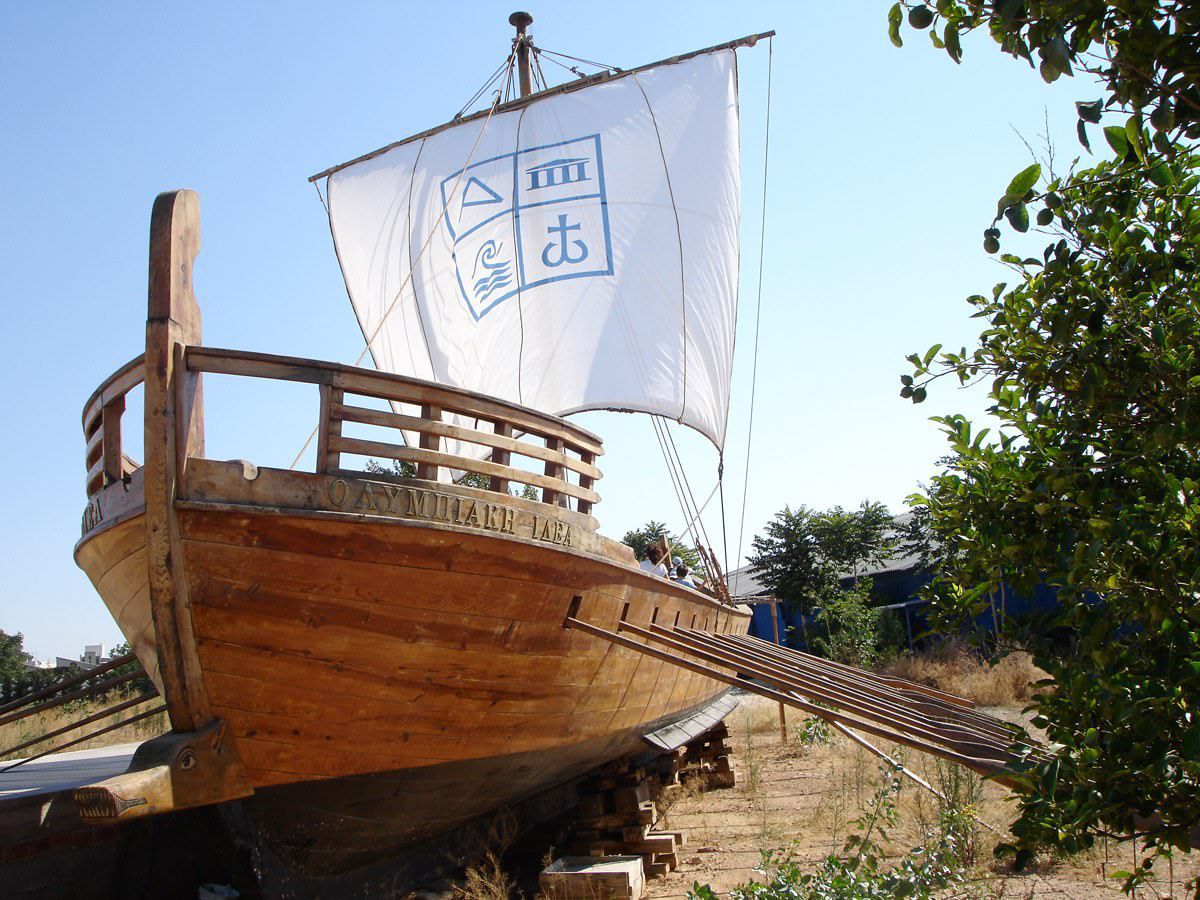Starting with and inspired by archaeological sources, the "Olympic Idea" was constructed...
The trireme "Olympic Idea" was launched in 2002 at the port of Piraeus and set sail for Otranto in southern Italy and the Greek-speaking villages of the neighboring country. In reality, it followed the same route as the 6th-century settlers, reaching the ancient city of Hydrus, a colony of the ancient Cretans!
It is a functional replica of an ancient ship, powered by thirty rowers, a sail, and a square sail. The thirty rowers who navigated the "Olympic Idea" to southern Italy that summer were scouts and naval athletes from the Kalamaki Nautical Club and the Nautical Sports Association.
The "Olympic Idea" anchored at the "Hellenic Cosmos" in 2004 and since then, the welcoming vessel has hosted children who admired it – and in turn, it has taken them on journeys through mythical and historical worlds. Through the educational programs of the "Hellenic Cosmos," voyagers have traveled again from Jason and Odysseus to Vasco da Gama and Magellan.
Ancient Maritime Routes
Long and round ships, respectively warships and commercial vessels. Rowers and captains, sea, waves, mythology, and history. The ship was one of the first means of transportation, the primary and most important tool for humans to conquer the world in antiquity. It was the most complex achievement.
Shipbuilding technology evolved significantly in ancient Greece. Using wood as the primary construction material, ancient Greek vessels mostly sailed from May to October. Sailors of that time determined their ship’s course based on the direction of the wind, landmarks, the sun, or empirical observation of the stars during the night. Although today technology is a fundamental tool for sailors, aren’t the elements of nature still essentially guiding them?
Greek ships of that era plied the Mediterranean alongside Carthaginian, Phoenician, and Egyptian vessels. Greek shipbuilders exchanged knowledge and experiences with other peoples of the eastern Mediterranean basin.
The world in which the Greeks moved extended from the eastern coasts of the Black Sea to the west as far as Marseille. There was maritime communication from Marseille to the ports of Sicily and southern Italy, and from there the journey continued to Greece and Asia Minor.
If the ships of the past and the present have stories to tell us, imagine how many stories the trireme of the "Hellenic Cosmos" has to tell, as it sails daily across the seas of children's imagination... With creativity as its captain, it roams through space and time, discovering ship stories, the history of navigation from antiquity to the present, and the reasons that drive people to travel.
And the thread of maritime history and evolution unfolds... trireme, pentekonter, olkas, bireme, trireme... Mythology intertwines with history, considering that the mythical Argo of the Argonauts was a fifty-oar (with 50 oars) ship!

























